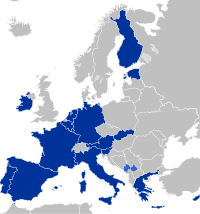Despite Crisis, Top EU Firms Continue To Invest In Innovation
In the face of the continuing economic and financial crisis, major EU-based firms continue to rely on R&D for their competitive edge.
According to the EU officials, EU firms increased R&D investment by 8.9% in 2011, up from 6.1% in 2010. The increase nearly matches US firms (9%), beats the global average (7.6%) and is far ahead of Japanese companies (1.7%).
R&D-intensive sectors tended to show above average employment growth. These are key findings of the European Commission’s 2012 “EU Industrial R&D Investment Scoreboard” of the top 1500 global R&D investors. The global top 50 includes 15 EU companies, 18 US firms and 12 from Japan.

Japanese car manufacturer Toyota tops the ranking, with Volkswagen the top EU company in third place (€7.2 billion invested). Recently released Eurostat data shows that combined EU public and private research spending increased to 2.03% of GDP in 2011, from 2.01% in 2010. This was mainly due to increased private sector spending.
Máire Geoghegan-Quinn, Commissioner for Research, Innovation and Science said, “Knowledge is the lifeblood of European competitiveness, so the increase in R&D investment by EU companies is a call to arms in our battle for growth and jobs. We now need to match private sector ambition with increased investment in R&D at national and European levels. EU leaders should send a strong signal by approving an ambitious budget for Horizon 2020, our future programme for research and innovation.”
Total investment by companies in the scoreboard shows that the US is still ahead of the EU, explained by the higher number of high-tech firms in the US (€178.4 billion versus €144.6 billion).
Companies showing the largest R&D expenditure increases among the top 100 are in the ICT sector, such as Huawei (48.4%), Apple (36.3%) and STMicroeleectronics (34.5%). Other companies in the top 100 with large jumps in their levels of R&D investment are from the automobile and parts sectors, some based in the EU such as BMW (21.6%) and Renault (19.4%).
In the EU, R&D growth figures in 2011 are to a large extent driven by the automobile sector (16.2% growth), which accounts for the biggest share of R&D investment in the EU (25%). Companies based in Germany, which account for around one third of the EU’s total private R&D investment, increased R&D by 9.5%. Companies in the UK and France, which also account for a large proportion of private research, had growth of 13.1% and 7.6% respectively.
The 2012 Scoreboard is based on a sample of 1500 companies, the world’s top investors in R&D and equivalent to almost 90% of the total expenditure on R&D by businesses worldwide. It measures the total value of their global R&D investment financed with own funds, irrespective of the location where the relevant R&D takes place. Out of the 1500 companies, 405 are based in the EU, 503 in the US, 296 in Japan and 296 in the rest of the world including Switzerland, South Korea, China, India and 23 other countries. Each of the Scoreboard countries invested €35 million or more in R&D in 2011.
The Scoreboard data shows that employment growth is generally higher in R&D-intensive sectors. Overall employment figures of a sample of 815 Scoreboard companies increased by 22.3% during the period 2003-2011, led by increases in highly R&D-intensive sectors (36.1%). In the EU sample, employment growth was very strong in high-tech sectors (38%), with 20% growth in the medium-high and 19% in the low-intensity sectors.
A new study highlights that the European Union is an attractive R&D location for firms from outside the EU, and that foreign R&D investments are a big source of employment and competitiveness in Europe. US firms in particular increased their R&D expenditures in the EU from USD 12 billion in 2000 to USD 23 billion by 2008. US firms spend ten times more on R&D in the European Union than in China and India combined. A recent survey (IP/12/905) of top EU firms indicated the strong positive effects of public R&D investment on private R&D, including fiscal incentives, national grants, EU financial support and public-private partnerships both at national and EU level.
Horizon 2020 is the new EU programme for research and innovation, presented by the Commission as part of its EU budget proposal for 2014 to 2020. In order to give a boost to research and innovation as a driver of growth and jobs, the Commission has proposed an €80 billion budget, up from the €55 billion of the current Framework Programme FP7.
The European Union has set a target that combined public and private research spending should reach 3% of GDP by 2020. This Europe 2020 headline indicator should be quickly complemented by a headline indicator on innovation, currently under development.
